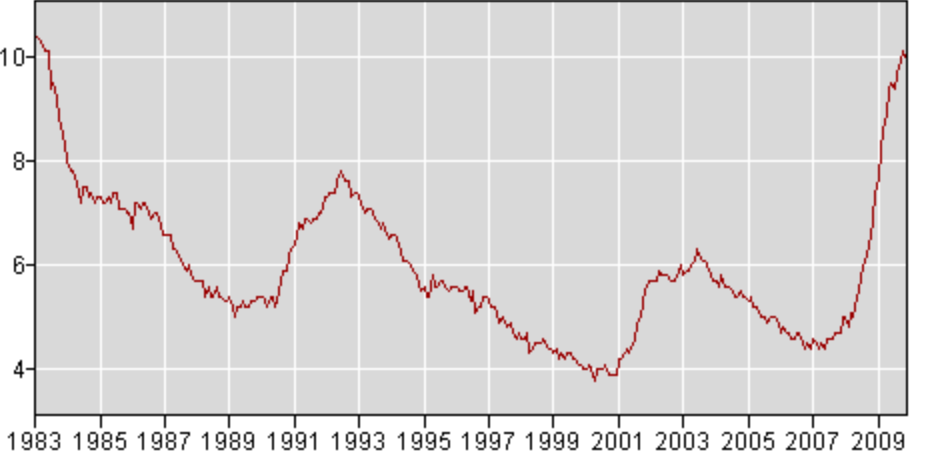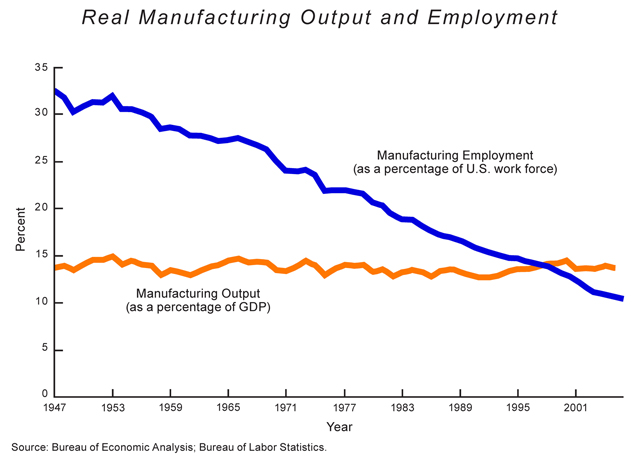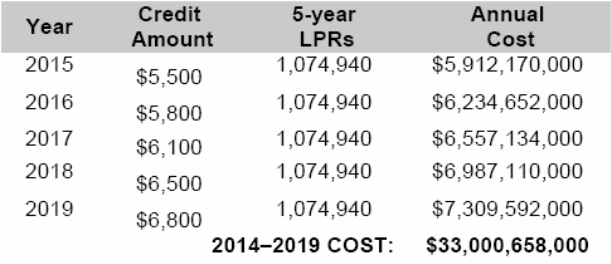Has capitalism failed? Look at some of the events of the past few years; they have left the average Joes, nurses, teachers, journalists, and countless others ready to throw in the towel regarding our free-enterprise system. Capitalism has seemed on the verge of a heart attack. The economy has been hit by one catastrophe after another: the failure of financial institutions, the housing-market meltdown, a roller-coaster stock market, high unemployment, and massive corruption.
The long-established system of American capitalism is debated to be under the threat of collapse since the nature of the attempts recently taken by the government to overcome the world economic crisis appears to differ from that of traditional capitalism. Social programs carried out by the government are growing at one of the greatest rates in the history of America and producing negative effects on our country’s economy.
The first and foremost indicator of the turnabout towards socialistic trends in American policies is the ever-increasing amount of social programs run by the government and totally controlled by it. The social initiatives started in the twentieth century by American government have reached unprecedented proportions by now, and in spite of the positive effect of social programs on a certain part of the population, the nation experiences tough times financing the well-intentioned initiatives.
One of the demonstrative examples, in this case, is the Nationalized Healthcare system which is now ardently debated in the White House. It is obvious that at present, a major healthcare reform is essential for the well-being of the US population, since on the one hand, the costs for maintaining the existing healthcare system have skyrocketed to unrealistic amounts in recent years, and on the other hand, there remain large quantities of people who are still in want of coverage.
According to statistics, America counts 45.7 million uninsured people, and an additional 25 million are under-insured (Neighborhoodlink.com). In order to solve the problem, President Obama’s administration has proposed to introduce new taxes and increase some of the existing ones. Thus, the estimated burden of $318 billion over the next decade bears heavily on the taxpayers — a move that hardly satisfies the nation (Neighborhoodlink.com).
Additionally, the US welfare and AFDC programs are overflowing with the numbers of applicants, which is caused by two reasons. Firstly, the amount of unemployed is astounding: for the first time in twenty-six years, America witnesses a full 10% unemployment rate (Bureau of Labor Statistic Data). This has not been observed since 1983:

Note: From Bureau of Labor Statistic Data. (2010). Labor force statistics from the current population survey.
Due to the recent rise in unemployment, the government reacted by increasing and extending the unemployment benefits, which has possibly helped the jobless but hit the average taxpayers the most.
The major cause of such swelling of unemployment statistics is viewed in the historical process naturally taking place in the developing world: previously, a huge share of labor force was involved in the two most thriving and productive spheres, farming and manufacturing; as a result of large-scale mechanization and automation of processes in these spheres, most employees turned out to be simply unnecessary.
The high manufacturing output could be maintained without a large workforce that required additional salary costs; consequently, people were laid off without losses to the enterprises (cf. Figure 2).

Note: From Manzi, J. (2009). Keeping America’s edge (p. 6). National Affairs, winter 2010 (2).
The second cause of overload on welfare programs is the large-scale immigration to the United States, which not only leads to increasing unemployment rate but also heightens the burden on American taxpayers sponsoring the popular welfare programs.
While President Clinton’s 1996 Welfare Reform protected American taxpayers from furnishing the needs of immigrants immediately upon their arrival (there used to exist a waiting period of five years for the immigrants before they were eligible for federal public benefits), the recent waiving of the waiting period has a devastating effect on the position of taxpayers.
According to expert estimates, this amendment to immigration policy “will cost the American taxpayers a total of at least $33.0 billion between 2015 and 2019, and potentially much more depending on the rate of utilization“ (Federation for American Immigration Reform):

Note: From the Federation for American Immigration Reform. (2009). House health care reform bill will burden American taxpayers (p. 2).
There is yet another area in governmental control which contributes to the current collapse of the capitalistic system, and this area is education. The dramatic rise in unemployment triggered increased interest in and demand for higher education among the population. Despite the high costs of higher education and tuition, more and more people are benefitting from governmental grants to needy students.
The question at issue is, whether it is at all beneficial and sensible to invest taxpayers’ money into sponsoring students: the current state of economy suggests that education is far from being the decisive factor in obtaining a better job, or any job at all. The labor market is developing so swiftly nowadays that many educationalists and labor specialists already claim the helplessness of the educational system in the face of the demands set forth by the modern labor market.
New specializations are appearing at a cosmic rate, disarming colleges and universities that are unable to adapt their curriculum so fast. Another peculiarity of modern education is that the most demanded sphere is that of finance. While previously students used to be interested in professions in science, technology, law and business, modern youth streams into finance since it is the area where the money is made nowadays. This has implications that touch upon not only the economic but also the political life of the nation (Zingales 31–32).
The importance of the financial sector for America’s escape from the recent world crisis cannot be overestimated. Since the market economy can efficiently function on condition that it is based on a healthy financial system, careful balancing of governmental intrusion appears to be vital for success. Attempting to maintain the existing financial system, the American government has recently undertaken actions that arouse controversy.
Firstly, the massive bailouts issues by the government to banking and loan institutions were in many cases addressed to recipients that continuously failed to pay enormous amounts of federal taxes.
Secondly, the investments of the government into American automobile industries generally have not proved successful, with one example of Ford showing that the bailouts were not the actual key to the survival of the company, and another example of the Chrysler precedent that has resulted in difficulty for the firms most in need to obtain governmental financing (Zingales 33).
Thirdly, as the banks sufficiently reduced their lending and complicated the loading procedure for those who want to obtain a mortgage, the housing market, which flourished after President Clinton’s 1994 National Homeownership Strategy, experienced a major failure proving subprime lending to have multiple devastating effects on the population’s financial state. After a period of relative prosperity and hope, people experience more and more difficulties with borrowing money for financing cars, homes, business expansion, capital equipment, etc.
As a result of governmental response to the financial crisis, the population is losing trust in fairness, legitimacy, and justice of the democratic capitalist system. The basis of capitalism as such consists of the concept of free enterprise, guaranteeing restricted governmental intervention into the economy and self-guiding market that ultimately maximizes the consumers’ welfare.
The exceptionally strong public support of capitalism that used to be rendered by American population for ages was based on the fact that everyone could benefit from the market, and no particular individuals or parties profited from keeping the system competitive (Zingales 23–24).
Perhaps this overall acceptance of the basic principles of capitalism by population, and its readiness to overlook the negative side effects produced by the free market comprised the framework which made it quite impossible for any really strong Marxists movements to develop in the United States. The public trust was shaken when the enormous profitability of the financial sector allowed it to carry out large-scale lobbying of the political system.
Driven by the erroneous idea that the interests of their business coincide with those of the state, large financial corporations started to manipulate the events in the political arena — a situation leading to domination of financial sector over the political and economic system on the whole. This naturally resulted in a skeptical perception of the latter’s objectivity and impartiality by the population, contributing to the vulnerability of the capitalistic system in the United States (Zingales 32–33).
In this situation there emerges the necessity of finding an optimal solution that will restore both the former glory and efficiency of the capitalistic system and general public trust in the fairness of the system. The cry of American people for the relocation of power from the hands of financial lobbyists to those of the nation itself was already voiced more than thirteen decades ago, and still seems most up-to-date:
“Now more than ever the people are responsible for the character of their Congress. If that body is ignorant, reckless, and corrupt, it is because the people tolerate ignorance, recklessness, and corruption. If it is intelligent, brave, and pure, it is because the people demand these high qualities to represent them in the national legislature. […] If the next centennial does not find us a great nation […], it will be because those who represent the enterprise, the culture, and the morality of the nation do not aid in controlling the political forces.” (Garfield 486, 489)
Reacting to the current actions undertaken by the government, there are opinions voiced as to collapse of capitalism and rapid shift to socialism in American policies. However, instead of drawing hasty conclusions, it appears more reasonable to investigate what socialism is as such and whether it is really forcing out capitalism out of the country.
According to the Marxist view of capitalism, its main aim is maximizing the profit for the capitalist irrespective of the workers’ interest, with the primary function performed by the government is “the stability of the prevailing capitalist relations of production” (Marquit 235).
A distinctive feature of capitalism consists in performing control of the state with a view to furthering the capitalists’ “own interests at the expense of the workers” — a situation observed in the US employers campaign aimed at reducing retirement and insurance benefits (Marquit 235, 237).
As opposed to the ideas of capitalism, socialism aims not at maximizing the profit of the capitalists, but at maximizing the prosperity and wellbeing of every member of society, at increasing everyone’s opportunity for welfare, and at minimizing human suffering through pervasive state control of industry and social services (Marquit 238). Socialism aims at balancing the industrial needs with requirements of society and sets the latter as a priority.
Since the United States used to experience a deep trust of the population in the existing capitalist system, there was no necessity for the introduction of extreme socialistic measures. However, due to recent economic events and dramatic changes in attitudes to the existing regime, ideas started to emerge about the total collapse of the American capitalist system and the onset of socialism in the United States.
Ivory Phillips comments on the wave of criticism raised by the governmental actions aimed at providing poor families with food, public education, and medical care.
The researcher prefers to shift the accents from political terms of socialism to more general ideas on humanity and compassion, and remarks on the noteworthy duplicity in people’s criticism or support of the socialist-like initiatives: “… many of these same people accept such social programs when it increases their wealth and stability or that of their friends and relatives, but reject it when it is for other people..[…]
They see little problem in having politicians and lobbyist sleeping together at taxpayers expense” (Phillips 4A). The moral obligation to help the needy necessarily and the necessity to save the economy from total collapse result in ideas about combining the two approaches and fitting the socialistic ideas in the basic framework of American capitalism. Eventually, there appears to be nothing negative in the idea outcome of socialistic policy, as described by Marquit:
“As the economy grows in socialist-oriented market economies, the increased income from the profits of state-owned enterprises in the state sector and from taxes on the private sector can be used for the expansion of social services and other benefits to the population as part of the social consumption budget, which not only does not have adverse effects on the competitiveness of the state-owned and privately owned enterprises, but enhances their competitiveness by raising the levels of education, health, and culture of the labor force.” (239)
In order to secure a relatively smooth and painless transition from the existing state of public mistrust in capitalistic system on the one hand and fear of socialism on the other hand, Jim Manzi outlines a range of proposals aimed at both increasing the market orientation of the American economy and providing more opportunities for the people to participate in it.
Among the vital measures Manzi lists takeover of industrial assets by the government, setting coherent regulations that would take into account the risks within the interrelated parts of the system, deregulating public schools so that public education becomes more competitive and responding to the needs of the market, and finally, reconceptualization of immigration not as a wave of low-skilled migrants that only worsen the employment situation but as a chance to improve the human capital with smart and motivated talents (Manzi 18–20).
Such an approach, according to Manzi, would satisfy the requirements of both the economic innovation and the social cohesion: on the one hand, it furnishes the needs of the economy for growth and development, and on the other hand, it stimulates the traditional values that constitute the core of any success at state level (Manzi 21).
Understanding the great responsibility the United States bear for maintaining and developing the values of democracy and capitalism on a world level, Manzi’s ideas appear a most reasonable and productive solution to the existing dilemma.
For a time, America’s grim economic forecasts and job losses seemed endless. Evidently, too many people, such bad events provided more proof that free markets produce instability and devastation. But the question remains: Why does capitalisms bad rap create such a powerful hold on the American psyche — not only in bad times but in good? The truth is that a surprising number of people simply do not understand how our economy works. It appears obvious that American history has proven that even in hard times that Americans still press on towards our goals of freedoms and self-preservation.
References
Bureau of Labor Statistic Data. (2010). Labor force statistics from the current population survey. Web.
Faiola., A. (2008). The end of American capitalism? The Washington Post. Web.
Federation for American Immigration Reform. (2009). House health care reform bill will burden American taxpayers. Web.
Garfield, J. A. (1877). A century of Congress. In B. Hinsdale (Ed.) The Works of James Abram Garfield (Vol. 2, pp. 486, 489). Boston: James R. Osgood and Company, 1883.
Manzi, J. (2009). Keeping America’s edge. National Affairs, winter 2010 (2). Web.
Marquit, E. (2007). Domestic and International Class Struggle in a Harmonious Socialist-Oriented Market Economy. Nature, Society, and Thought, 20(2). 235–240.
Neighborhood link. Health care reform — How much will it cost and who will pay? Web.
Phillips, Ivory. (2009). Social services. Jackson Advocate, 71(51), 4A, 1. Retrieved December 11, 2009, from Gale database.
Zingales, Luigi. (2009). Capitalism after the Crisis. National Affairs, fall 2009 (1). Web.